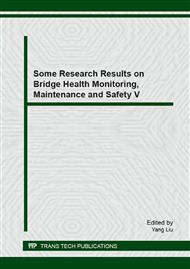p.1
p.9
p.17
p.25
p.35
p.45
p.53
p.61
A New Technique for Construction of Limestone Cave
Abstract:
A cave is formed when surface water and groundwater effect on soluble rocks through chemical and mechanical damage. That is called karst phenomenon. It will affect the stability and stress distribution of the surrounding rock. Part of the tunnel construction process will affect the stress distribution of the surrounding rock greatly. Some caves are unavoidable, which could make structures insecurity and instability. At the same time, the construction process will become complicated. Caves will increase the risk and uncertainty of the whole project as well. Therefore, the development of scientific and efficient measures to ensure the quality and safety of the construction project becomes extremely important. In this paper several safety precautions would be introduced based on the specific case of tunnel construction. And experience will be given in order to benefit the construction of similar problems.
Info:
Periodical:
Pages:
9-16
Citation:
Online since:
June 2015
Authors:
Price:
Сopyright:
© 2015 Trans Tech Publications Ltd. All Rights Reserved
Share:
Citation:


